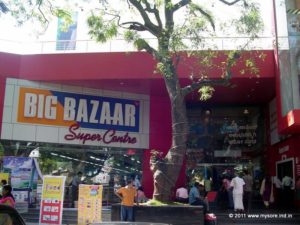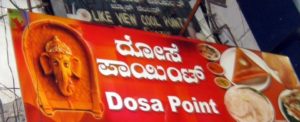
 Scan to see this page on your mobile phone
Scan to see this page on your mobile phoneThe climax first. "Doing a Mysore" was a term coined by the Rolls-Royce executives in the 1920s. What they meant by this - buying Rolls-Royce cars in bulk!
For some peculiar reason (the lucky prime?) the ruling maharaja, Krishna Raja Wodeyar IV ordered Rolls-Royce cars in batches of 7. He could, because with many hundred million rupees worth asset (about $56 billion or 2.6 trillion Indian Rupees in present day estimate), he was one of the richest men in the world of those days.
In today's context buying 7 cars for personal use may sound a bit weird, leave alone the fact that they are Rolls-Royce cars.
If you can understand the context and circumstances of the princely states, their affection for luxury is found to be no surprise. The colonial rule was already established. Many of the princely states were ruled by the royal families with the patronage of the British Raj. The maharajas and princess were asset rich and also with ample time in hand for many things beyond the courtly matters. By now the British has already introduced them to may western world's indulgences , Rolls-Royce included.
Rolls-Royce was ( and still is) known for customizing each cars to the requirements of their customers. And the erstwhile Indian princes and kings had a long list of special needs.
Cars meant for the women folks came with special curtains. One of the maharajas of a princely state even sent to England a pink footwear of the queen to get the car painted in matching colors.
Another maharaja customized his car to the shape of a swan, promptly earned the nick name "Bathak Raja (the goose king)", as his onlooking peasant citizenry could not differentiate between the goose and swan.
A lot many cars made it to India with the royal crest of the respective kingdoms, to be used for stately functions.
And on top of it all, Rolls-Royce cars were known for its robustness and elegance. Be it a hunting expedition, a ceremonial parade or a state visit, they were a much welcomed addition to the royal paraphernalia. So everything matched - maharajas fancied, Rolls-Royce obliged - money was definitely not an obstacle!
On the flip side, many maharajas in India had the habit of converting their Rolls into garbage trucks, when they felt insulted by the company for one reason or other.Their wealth matched their pride to do so. Propelled by vanity more than need, the 'Maharaja Market' in India was too precious for the Rolls-Royce company to be taken lightly. Once a Rolls-Royce sales executive told a Maharaja (of Alwar ) in the showroom, "...that's an expensive model, sir".He ordered 10 cars, removed their roofs off and used them as garbage collecting vans.
Not every ruling royals were happy with the superior design of Rolls-Royce cars. The Nawab of Arcot, suddenly stopped using his new Rolls-Royce car. Reason ? The engine didn't make enough noise for people to look up and pay homage to him!
During the colonial period, one in every 5 Rolls-Royce made in England was India bound! That trend continued till the 1940s. According to an estimate , till the beginning of the second world war some 2,000 Rolls-Royce made it to India, an overwhelming majority found its home at the garages attached to the palaces of maharajas scattered around the Indian subcontinent. What happened to those cars after the kings lost most of their powers (and wealth) after 1947 is another story.
So in that context, "Doing a Mysore" was a happy, if not surprising thing as far as the Rolls-Royce was concerned. This phrase still pops up, when someone tries to buy expensive cars in large numbers.
A Tailpiece: If Rolls-Royce was to coin another phrase "Doing a Bharatpur", it would probably mean buying 3 cars at a time. For this maharaja always ordered his Rolls-Royce cars in batches of three.













